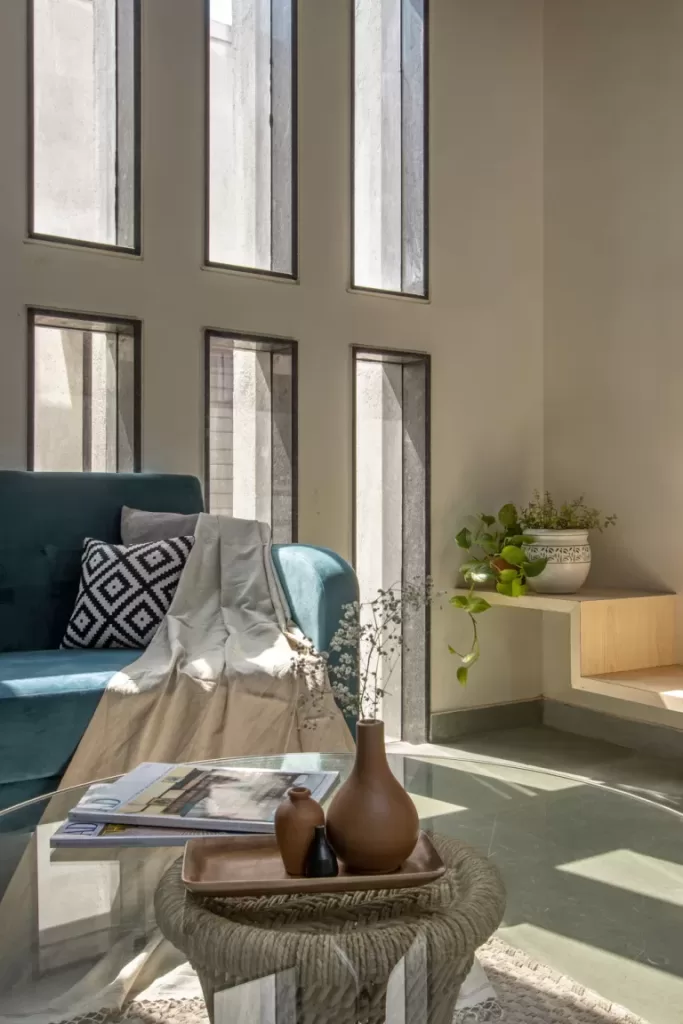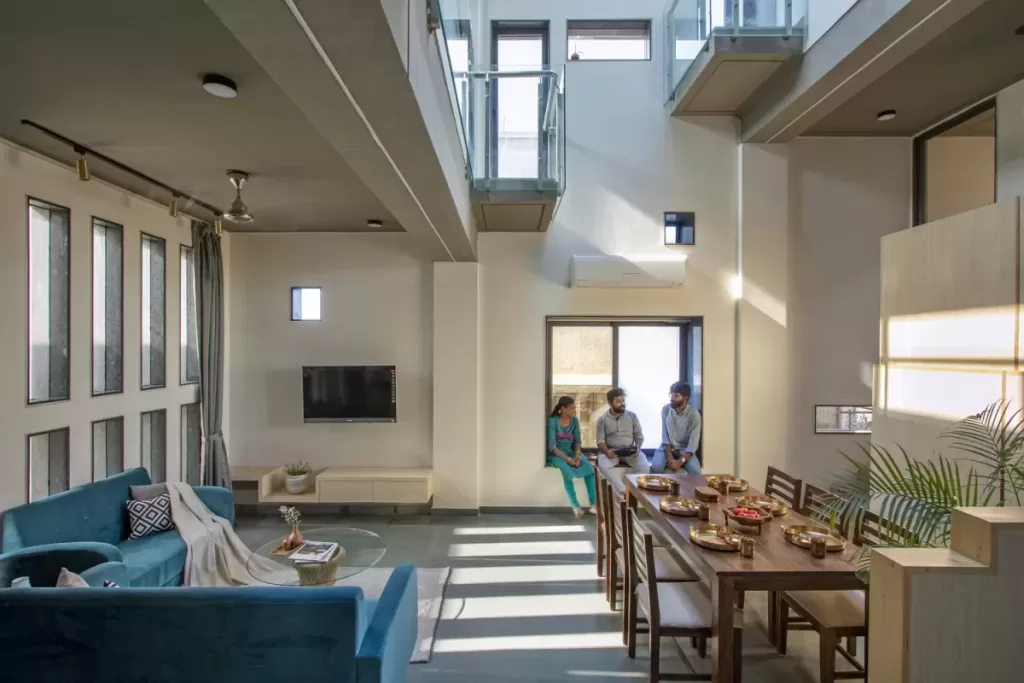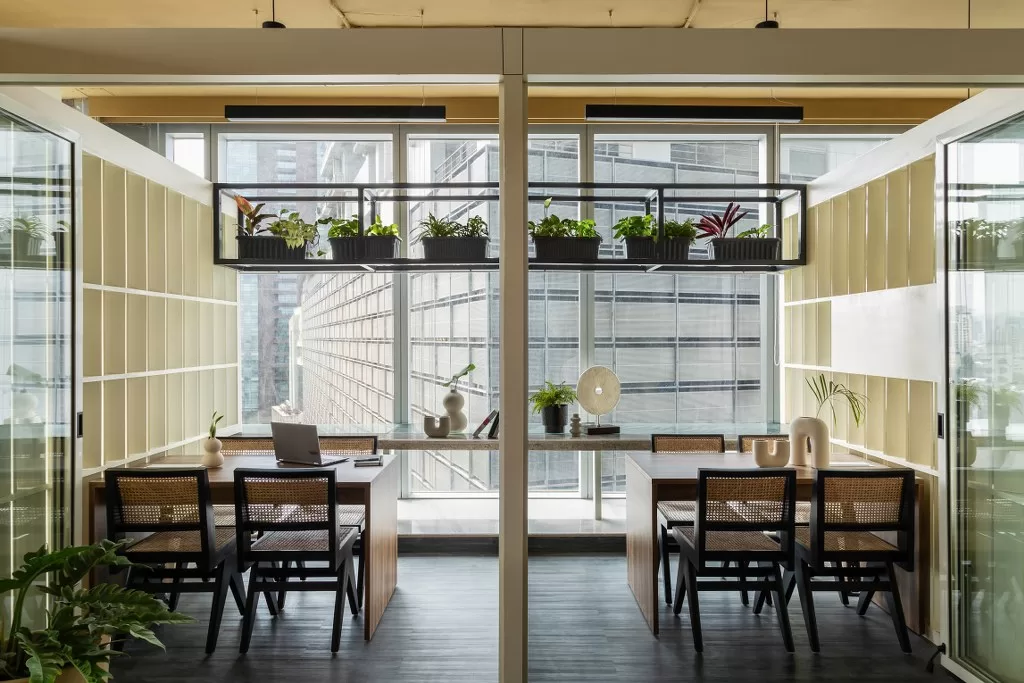16 Feb 20 Biophilic Interior Design Ideas To Merge Life With Nature
Biophilic Interior Design is a very sensory approach to the style of design. It is the idea that humans possess an innate tendency to seek connections with nature. Thus, biophilic interior design uses nature’s incorporation, centred on experience in the momentary physical and sensory elements. Nowadays, people spend most of their time indoors. Biophilic interior design can address the universal issues of human health and well-being. Using natural materials, adding greens, using water bodies, and allowing the flow of air and light in the interiors are a few ways to make a biophilic interior design.

A few ways can make the experience of interiors for humans sensory, along with nature. These incorporations can turn the designs into a very comfortable living space through biophilic interior design.
1. Incorporating the Natural Light

When one comes into a space well-lit by the natural sunlight that is present outside nature, it affects one’s experience of coming into the space. The space with a huge window or small openings that are more in number shall never be neglected in the interiors. More and more light during the daytime from those openings can give us various opportunities to connect with the space. These openings, or the flow of natural light, can be used along with the sitting spaces. Allowing one’s centre table to sit in a space that could connect it with the natural light would uplift the whole experience of the living space.
2. Flow of Fresh Air

When one enters a space that is filled with the intake of natural air through good cross ventilation, it validates the senses of the person. When including the elements for interior design, one must see where the natural air can be used so that, being indoors, one can experience the fragrance from the outdoors. The furniture that fits into the spaces can be near or in the spots where one can experience the natural flow of air. Keeping air-purifying plants can create a wonderful feeling of fresh air in the space.
3. Use of Natural Materials and Finishes

When there is a sense of connectivity to be developed within the user and the space, it highly depends upon the vision that one sees. There are certain tones and textures that one can use to create a biophilic interior design. The forms and materials can be used in their natural and raw forms. Materials with brown shades can have a natural effect on the room.
4. Using Organic Forms

Being natural is one of the characteristics of being formless for any element. When one designs certain elements, they try to give them a specific form, which hides the natural characteristics of any material. When we talk about biophilic interior design, we tend to see the natural form of the element when put into place. One can even use the curves in the interiors to indicate the free-flowing shapes in the elements. Using materials such as wood in their natural form would allow the interiors to look organic.
5. Including Greens and Garden Spaces

While doing a biophilic interior design, one must always include good leafy plants. The garden spaces can be inside by including floor greens and good views. The earthen pots and plants can affect a lot of the greens inside. Also, plants like ferns and palms can be added, along with herbs and succulents.
6. Natural Imagery and Views

When one talks about having a biophilic interior design, it affects the seating areas and the open and semi-open areas that are included in the spaces. Adding to the spaces with certain paintings that have natural scenic beauties or colours within the frame will always add to the space. Hanging pots with the plants can also work for the biophilic interior design style. Giving a walkway and a small plantation alongside will create a feeling of connection inside.
7. Use of Natural shapes and forms

By using a façade that is decorated with terracotta tiles for the openings that flush in the natural light in the room, it adds the natural form of mud and its smell to the atmosphere. Using these tiles can thus add the smell of mud existing in nature, which enhances the space with the feel of wet freshness in the room. If one covers the inside walls with plasters of mud, it can add texture to the room.
8. Making Cozy Corners

Biophilic interior design means making connections with the life that nature offers inside the home. When one can sit between the plants or among the natural light and the fresh air flow, this space becomes inherent to their living experience inside the home. Creating seating or corners that have plants on a small wooden table will create a strong living experience.
9. Using The Warmth of Light

Certain kinds of lights are best suited to the browns and greens of nature. The use of warm yellow lights in a vintage-looking chandelier is the best combination for creating a biophilic interior design. Giving warm lights along with the natural elements would help give a positive feeling to the space. Lights always affect the ambiance of the space by intertwining with the furniture and other elements in the space. Hence, smart use of lights can affect the overall nature of the space in a biophilic interior design.
10. Including Water Bodies

Another natural element that is included in the biophilic interior design is the element of water. When one places a water body inside the house to create a striking entrance or uses it in the background of the living room, it connects more to the senses of the users. These water bodies can act as the boundaries of the passages inside the house, and even small ponds can be created with plants floating above.
11. Allowing Sounds

Not every part of the space should be kept enclosed within the four walls. When one connects the outside space with the inside by allowing nature to indulge, that’s when one can feel the biophilic interior design in the surroundings. We can keep plants and pots near the openings or windows that can make the sound of the leaves while the air flows. This can create a different kind of ambiance in the space by simply keeping plants and adding sound through them.
12. Images of Nature

When the space is filled with all the furniture with different raw textures, a few images of nature, such as leaves or flowers on the wall, will add to your space. These paintings can be as simple as a green leaf on the canvas. Plain organic images depicting nature in frames can add to the biophilic interior design.
13. Earthy Color Tones

When we talk about nature, the colours that come to mind are the shades of blue, green, and brown. The brown colour is often associated with the wood and the mud. These colours can be used in the designs in the fabrics and greens or on the walls in the house.
14. Rough Textures

The interiors can often look natural with the raw materials used in the furniture or in the construction. Wood is the best material to use when one wants to show biophilic interior design. The use of materials such as cane in the cupboard shutter and chairs can make them look biophilic. Using rough stone-textured walls can continue to give a natural effect.
15. Using Varied Sizes

Every time, giving every element in the space a definite size can make the space very specific. Whereas, while doing a biophilic interior design, the size and shapes used in the design must be organic. This will make the space free-flowing and natural in terms of the atmosphere and experience it creates. When there are various plants kept in a space, forming a cluster or even a row, it gives an organic look to the space.
16. Using Chandeliers

The roof or the ceilings of the space also add to the surroundings. It holds the place together with its form, colours, or the hangings that are used to decorate it. The chandeliers made out of cane or jute materials or depicting the patterns of the leaf can add to the biophilic interior design.
17. Types of Rugs

Several types of rugs can be used to define different parts of the space. These rugs can be made up of bamboo and jute and used on the floor along with the greens and earthen colours. This kind of rug would add to the natural look of the interiors.
18. Using Skylights

The houses with skylights can be used very elegantly to uplift the spaces. One can place different plants in spaces covered with skylights to maximise the effect of greens in the place. The pots that are used can be of earthen colours, adding to the biophilic interior design.
19. Using Natural flooring

When a space is made up of natural flooring materials such as wood, stone, and marble, it gives the raw effect of the material to the space. Using stone as a flooring material can make the space look more elegant and calm.
20. Spatial Organization

The movement of the user in the space matters to them the most while experiencing any place. When one moves from one space to another, they develop a connection to the space. Hence, in biophilic interior design, when people place movement where they are visually connected to nature while moving, they create a natural impression of the spaces in their heads.
The biophilic interior design encourages the physical and mental well-being of the users in the space. It includes the elements that build a coherent relationship between the user and the spaces, both physically and emotionally. A biophilic interior design includes using natural materials, including greenery, sunlight, natural air, and ventilation into the space. The successful application of biophilic interior design results in a better lifestyle for the users. Hence, using the biophilic interior design approach would benefit the user by making their connection to the spaces in a very organic manner, which would help them have a better experience of the place.
Content Writing And Research By: Ar. Rajeshwari Pandya Modi
The post 20 Biophilic Interior Design Ideas To Merge Life With Nature appeared first on The Architects Diary.




No Comments